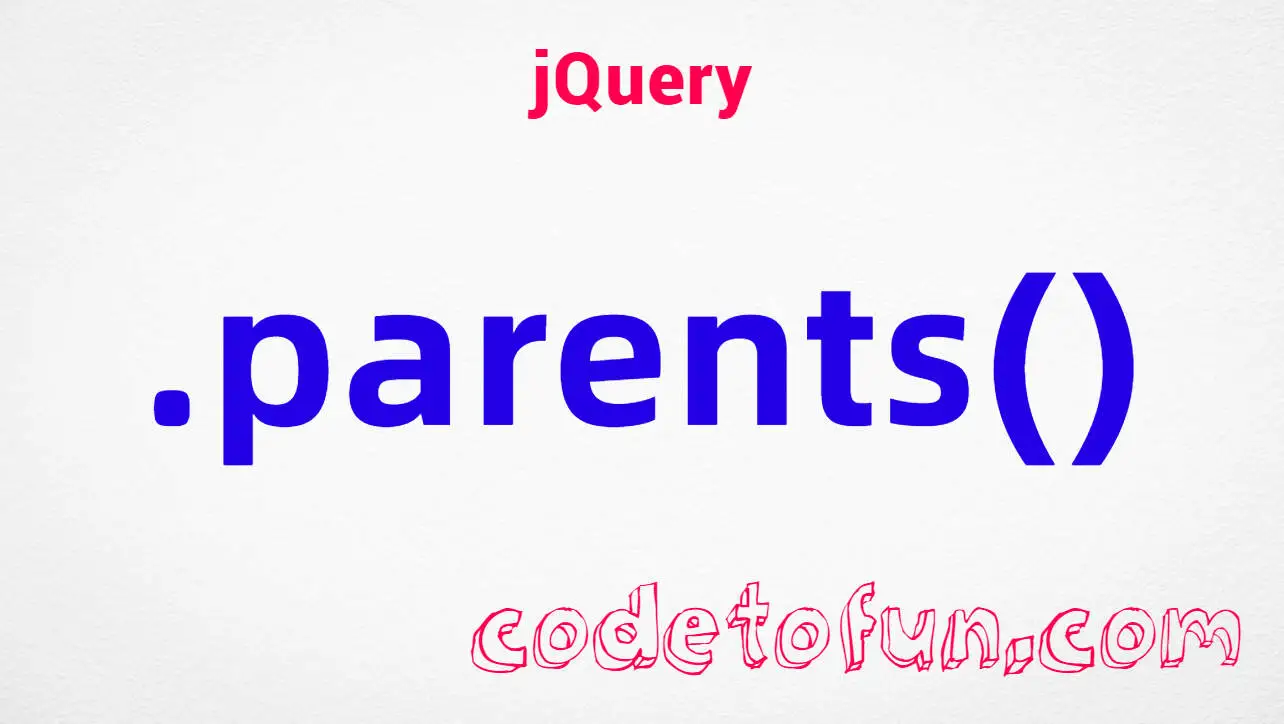
jQuery Basic
jQuery Ajax Events
- jQuery ajaxComplete
- jQuery ajaxError
- jQuery ajaxSend
- jQuery ajaxStart
- jQuery ajaxStop
- jQuery ajaxSuccess
jQuery Ajax Methods
- jQuery .ajaxComplete()
- jQuery .ajaxError()
- jQuery .ajaxSend()
- jQuery .ajaxStart()
- jQuery .ajaxStop()
- jQuery .ajaxSuccess()
- jQuery jQuery.ajax()
- jQuery jQuery.ajaxPrefilter()
- jQuery jQuery.ajaxSetup()
- jQuery jQuery.ajaxTransport()
- jQuery jQuery.get()
- jQuery jQuery.getJSON()
- jQuery jQuery.param()
- jQuery jQuery.post()
- jQuery .load()
- jQuery .serialize()
- jQuery .serializeArray()
jQuery Keyboard Events
jQuery Keyboard Methods
jQuery Form Events
jQuery Form Methods
- jQuery .blur()
- jQuery .change()
- jQuery .focus()
- jQuery .focusin()
- jQuery .focusout()
- jQuery .select()
- jQuery .submit()
jQuery Mouse Event
- jQuery click
- jQuery contextmenu
- jQuery dblclick
- jQuery mousedown
- jQuery mouseenter
- jQuery mouseleave
- jQuery mousemove
- jQuery mouseout
- jQuery mouseover
- jQuery mouseup
jQuery Mouse Methods
jQuery .parents() Method

Photo Credit to CodeToFun
🙋 Introduction
In jQuery, the .parents() method is a powerful tool for traversing the DOM (Document Object Model) tree to find the ancestors of selected elements. Understanding and effectively using this method can greatly enhance your ability to navigate and manipulate elements within your web pages.
In this guide, we'll explore the jQuery .parents() method with clear examples to help you grasp its functionality and applications.
🧠 Understanding .parents() Method
The .parents() method in jQuery allows you to traverse upwards through the DOM tree, selecting all ancestors of the matched elements. An ancestor is any parent, grandparent, great-grandparent, and so on, of the selected elements.
💡 Syntax
The syntax for the .parents() method is straightforward:
$(selector).parents([filter])Parameters:
- selector: A selector expression to filter the ancestors.
- filter (optional): A string containing a selector expression to match elements against.
📝 Example
Selecting All Ancestors:
Suppose you have a nested HTML structure and you want to select all ancestors of a specific element. You can achieve this using the
.parents()method as follows:index.htmlCopied<div id="ancestor1"> <div id="parent1"> <div id="child1"></div> </div> </div>example.jsCopied$("#child1").parents().css("border", "2px solid red");This will apply a red border to all ancestors of the element with the ID child1.
Selecting Ancestors with a Filter:
You can also narrow down the selection by providing a filter to the
.parents()method. For example, let's select only the ancestors with a class of ancestor:index.htmlCopied<div class="ancestor"> <div id="parent2"> <div id="child2"></div> </div> </div>example.jsCopied$("#child2").parents(".ancestor").css("background-color", "lightblue");This will set the background color of the ancestor element with the class ancestor to light blue.
Chaining .parents() Method:
The
.parents()method can be chained with other jQuery methods for more complex operations. For instance, let's find the immediate ancestor of an element and perform an action on it:index.htmlCopied<div class="ancestor"> <div id="parent3"> <div id="child3"></div> </div> </div>example.jsCopied$("#child3").parents().first().css("font-weight", "bold");This will make the immediate ancestor element of the element with the ID child3 bold.
Performance Considerations:
While the
.parents()method is versatile, it's essential to consider performance implications, especially when dealing with large DOM trees. Limit the scope of your selection by providing specific selectors or chaining methods efficiently to optimize performance.
🎉 Conclusion
The jQuery .parents() method provides a convenient way to traverse upwards through the DOM tree, selecting ancestors of elements based on various criteria. Whether you need to select all ancestors, apply actions to specific ancestors, or chain methods for more complex operations, this method offers flexibility and power.
By mastering its usage, you can efficiently navigate and manipulate the DOM structure of your web pages, enhancing their interactivity and functionality.
👨💻 Join our Community:
Author

For over eight years, I worked as a full-stack web developer. Now, I have chosen my profession as a full-time blogger at codetofun.com.
Buy me a coffee to make codetofun.com free for everyone.
Buy me a Coffee











